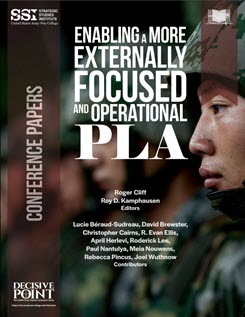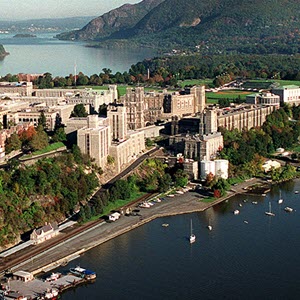Edited volume from the People's Liberation Army (PLA) Conference
Enabling a More Externally Focused and Operational PLA
2020 PLA Conference Papers
Contributing researchers: Lucie Béraud-Sudreau, David Brewster, Christopher Cairns, R. Evan Ellis, April Herlevi, Roderick Lee, Paul Nantulya, Meia Nouwens, Rebecca Pincus, Joel Wuthnow
The papers in this monograph were originally presented at the 2020 People’s Liberation Army (PLA) Conference convened by National Bureau of Asian Research, the Strategic Studies Institute of the U.S. Army War College, and the China Strategic Focus Group, Headquarters, U.S. Indo-Pacific Command. Organized around the theme “Enabling a More Externally Focused and Operational PLA,” the conference focused on the PLA’s limited but expanding capacity to operate beyond East Asia within the broader strategic context of China’s transformation from a regional to a global power.
Executive Summary
Although the Chinese People’s Liberation Army (PLA) is not yet a global, expeditionary force on par with the US military, the former has nevertheless significantly expanded its ability to operate abroad. To better understand the PLA’s capabilities to conduct overseas missions, this volume examines China’s military relations with Europe, Africa, and Latin America; the country’s military activities in the Indian Ocean, polar regions, and Pacific Island countries; and the emerging roles of the PLA Rocket Force and Joint Logistic Support Force.
The authors of the chapter on Europe find China’s military relations in the continent consist primarily of port calls, joint exercises, seminars, and high-level officer exchanges. In addition, China continues to produce weapon systems that were licensed by European countries before the EU’s 1989 post–Tiananmen Square embargo on arms sales to China. Furthermore, Beijing attempts to acquire European military technology through a variety of other means.
The vast majority of China’s military interactions with Africa, by contrast, consist of senior officer and personnel exchanges; only a small fraction are exercises or port calls. In addition, significant numbers of African military personnel continue to be educated at China’s institutions for professional military education.
China’s engagement with Latin America and the Caribbean has expanded substantially over the past 25 years, with notable areas of interaction including sales of Chinese military equipment to countries in the region, China’s participation in the UN Stabilization Mission in Haiti, visits to the region by PLA Navy ships, and education and training exchanges.
China’s access to the Indian Ocean region is constrained by the semienclosed geography of the ocean and the Great Himalaya mountain range. Beijing has sought to mitigate these constraints by developing new land routes through Pakistan and Myanmar, constructing maritime logistical infrastructure in the Indian Ocean, developing air access points, and opportunistically building political partnerships with Indian Ocean states.
In the polar regions, China’s activities have been primarily diplomatic and scientific. Though China has yet to send military forces into the Arctic, Chinese naval vessels have been seen in the Bering Sea, and, in 2017, the PLA Navy took part in joint exercises with Russia in the Baltic Sea. In the Antarctic, PLA assets are used to resupply and operate China’s research stations.
China’s military interactions with the Pacific Island countries have been limited. But PLA Navy ship visits have incrementally increased over time. Although some have speculated China is establishing bases in Fiji, Kiribati, and Vanuatu, so far, no Chinese military facilities have been established in any of the Pacific Island countries.
The role of the PLA Rocket Force may be changing because it is gradually losing its monopoly on nuclear counterattack and conventional, long-range, precision-strike capabilities to the PLA’s other services. The PLA has also integrated portions of the PLA Rocket Force’s operational force into the joint theater command-and-control system.
The recently created Joint Logistic Support Force is the People’s Liberation Army’s primary agent for joint logistics for domestic and regional contingencies. The Joint Logistic Support Force has no significant overseas responsibilities at present. In the future, the Joint Logistic Support Force could become an important supporting actor, but the four services of the People’s Liberation Army will likely retain the lead role.



 2022 People’s Liberation Army Conference
2022 People’s Liberation Army Conference